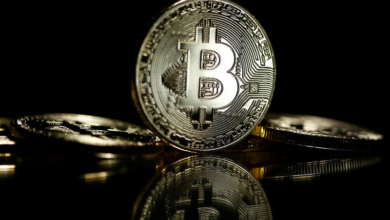Bitcoin inflation rate drops to all-time lows

Bitcoin (BTC) has reached a new milestone by registering its lowest ever inflation rate of approximately 1.74%, just days after the recent halving event. With 93.3% of the maximum BTC supply of 21 million coins already issued, estimated at 19.6 million coins, it is anticipated that Bitcoin scarcity will further drive demand, potentially leading to a surge in the price of the leading digital currency.
In contrast, traditional currencies suffer from higher inflation rates due to government restrictions and economic policies. Several countries recorded significantly high inflation rates in 2023, with Argentina reaching as high as 161.0%, according to data from Inflation Data.
The European Union reported lower inflation rates, with the annual inflation rate in the Eurozone reaching only 2.9% in December 2023. Nevertheless, the recent halving event is expected to contribute to reducing Bitcoin’s inflation rate, which may affect its scarcity and investor behaviors.
This downward trend in BTC inflation rate indicates that halving events, which reduce the rewards for new transaction block issuance by half, typically result in increased buyer interest due to the reduction in Bitcoin’s supply.
Bitcoin’s price has historically shown a significant increase after each halving event, according to a report by CoinGecko, with BTC price soaring by 8,858% after the first halving event in 2012. Despite a decline in percentage gains after subsequent halving events – 294% and 540% respectively – the pattern of price increase following halving events remains evident. Furthermore, the impact of these events extends beyond Bitcoin alone, affecting other major cryptocurrencies such as Ethereum (ETH), although the effects may vary due to differences in supply mechanisms among these currencies.
Following the fourth halving event, the digital currency community speculates on the short-term market dynamics. Bitwise recently stated that Bitcoin’s price typically experiences a slight decline during the month following a halving event, but significant gains are usually recorded over the following year.
Asset management companies also noted a slight increase in Bitcoin’s price by 9% during the month after the 2012 halving event, with BTC value experiencing remarkable increases of 8,839% in the following year. Similar price patterns were observed after the subsequent halving events in 2016 and 2020, with BTC price significantly rising in the year following each event.
The significant fluctuations in Bitcoin’s market value before and after halving events reflect investor behaviors during these crucial times. For instance, Bitcoin’s market value was estimated at around $123.3 million during the first halving event, but it quickly surged to $947.4 million shortly after. Similar patterns were observed during subsequent halving events, with Bitcoin’s market value undergoing substantial changes.
These fluctuations indicate Bitcoin holders’ anticipation for speculation during halving events, as they typically retain their assets to capitalize on potential increases in the currency’s value. Analysis of pre- and post-halving periods suggests that most investors hold onto their BTC, with expectations of price increases due to reduced supply of the currency after these events.








